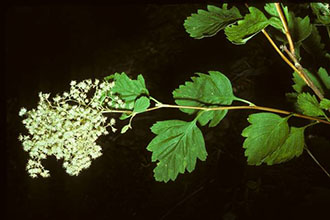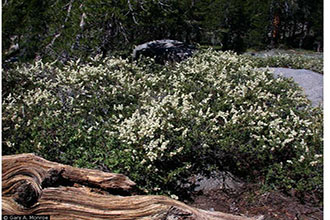Taxonomy: Kingdom - Plantae (plants). Subkingdom - Tracheobionta (vascular plants). Superdivision - Spermatophyta (seed plants). Division - Magnoliophyta (flowering plants). Class - Magnoliopsida (dicotyledons). Subclass - Rosidae. Order - Rosales. Family - Rosaceae (rose). Genus - Holodiscus (K. Koch) Maxim. Species - Holodiscus discolor (Pursh) Maxim.
Ecology: Oceanspray is important or dominant in many plant communities of the Pacific Northwest, California, and the Northern Rocky Mountains. These communities include seral and old-growth conifer, seral and old-growth hardwood, mixed-riparian, and mixed-shrubland types. Oceanspray is most common in early succession but occurs in all stages of succession. Oceanspray prefers open sites - it is described as a light demanding, early successional species. Logging and fire promote creambush oceanspray by opening the canopy.



